About Chungnam
News
Chungnam's Wonderful National Park District
The Trekking Route in Mt. Gyeryong, one of Korea's Celebrated Mountains
2009.08.27(목) | CNnews (![]() chungnamdo@korea.kr)
chungnamdo@korea.kr)
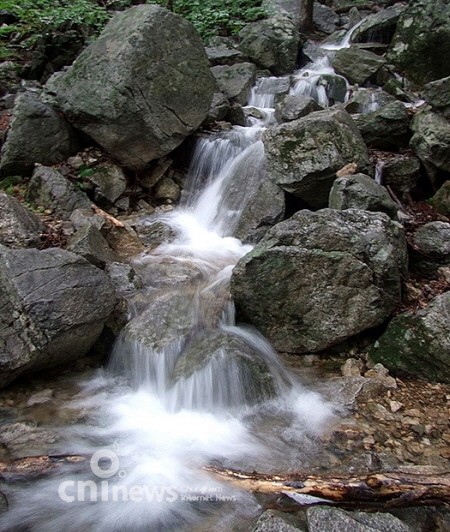 |
||
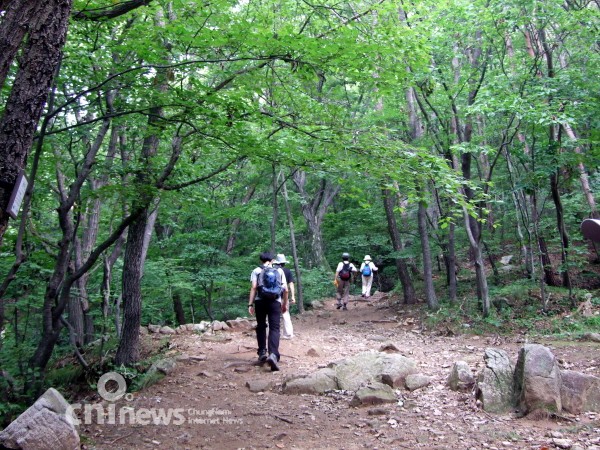 |
||
Mt. Gyeryong is Amazing through All Seasons
Mt. Gyeryong is renowned for its beautiful scenery including peaks, fantastic rocks and stones, lavish woods, and rocky cliffs and a good number of old Buddhist temples and shrines to celebrate loyalty.
There are four famous Buddhist temples in four major directions: Donghak, Gab, Shinwon, and Yonghwa Temple in the east, northwest, southwest, and southeast respectively. The valleys and ridges between Donghak and Gap Temple are so famous for their beauty that Mt. Gyeryong is usually represented by the former in spring and the latter in autumn.
You can always enjoy your hiking or climbing in Mt. Gyeryong every season; the cherry blossoms tunnel around the entrance to Donghak Temple is specially renowned in spring, the verdure of the Donghak Temple Valley in summer, the colorful leaves around Gap Temple in fall, and the snow landscape along the natural ridges in winter.
The snow flowers on the Sambul Peak are considered to be the most intriguing attraction during winter. The natural ridge between Gwanum and Sambul Peak, which expands over 1.8km, presents the most marvelous fun and excitement in winter. The path is very narrow to to the extent that it barely holds one person, but presents a variety of changes and turns.
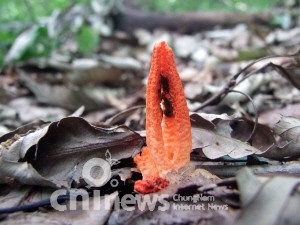 |
||
 |
||
Gap and Donghak Temple
Gap Temple is situated in the forest of old pine and zelkova trees in the northwest to Mt. Gyeryong. One of the Hwaeom Buddhist Order's ten major temples, it has five small temples. On the perimeter, there are ten buildings including the Daewoongjeon and Cheonbuljeon with 1,000 Buddhist statues.
Donghak Temple is the temple where Buddhist nuns are educated across the nation and has a group of solemn buildings including the Daewoongjeon and a three-story stupa. There is the Nammae Pagoda, which holds a beautiful story and is loved by many people.
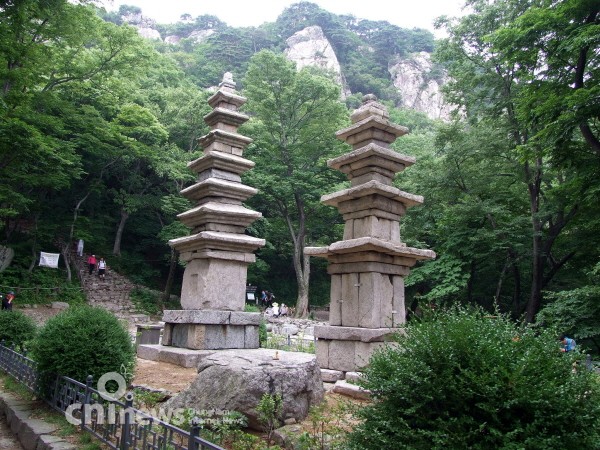 |
||
Recommended Routes
You should follow the natural ridge from Donghak Temple in order to properly appreciate the mountain's beautiful scenery. The route covers Donghak Temple, Eunseon Falls, Major Ridge, Gwaneum Peak, Sambul Peak, Geumjandi Pass, and Gap Temple.
When driving, you can pass the Sambulbong Pass and Nammae Pagoda to Donghak Temple instead of Geumjandi Pass. The route is easy enough for beginners and young family members except for the rather steep part between the Eunseon Falls and Major Ridge. Both the routes will take five to six hours. Even leisurely walking won't take more than six hours.
If you want a lighter route, a better option is to choose the route between Gapsa Temple Valley and Donghak Temple Valley. A so-called “Tourist Trekking Course,” the route extends 1.5~2km and covers Nammae Pagoda, Geumjandi Pass, and the path to Yongmun Falls. There is no worry of getting lost on the route because there are posts here and there and always processions of climbers.
In winter, the recommended route covers Donghak Temple, Gwaneum Peak, Sambul Peak, Geumjandi Pass, Nammae Pagoda, and back to Donghak Temple. The natural ridge between Gwaneum and Sambul Peak is the core of the trekking fun with widely turning paths and interesting elements. Past Sambul Peak, you can have an overall view of the mountain's famous peaks including Yeoncheon and Munpil and in the distance River Geumgang on top of Geumjandi Pass.
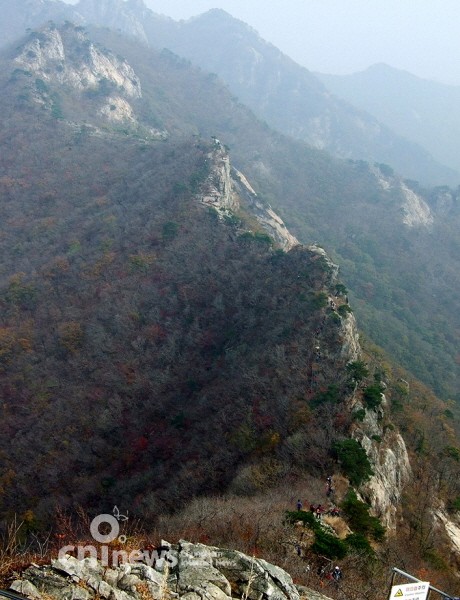 |
||
Donghak Temple-Eunseon Falls-Gwaneum Peak-Natural Ridge-Sambul Peak-Geumjandi Pas-Gap Temple (12.5km, 5 hours and 30 minutes)
Donghak Temple-Eunseon Falls-Gwaneum Peak-Natural Ridge-Sambul Peak-Nammae Pagoda-Donghak Temple (12.5km, 6 hours)
Donghak Temple-Nammae Pagoda-Geumjandi Pass-Gap Temple (8km, 4 hours)
Donghak Temple-Eunseon Falls-Gwaneum Peak-Yeoncheon Peak-Gap Temple (8.8km, 5 hours)
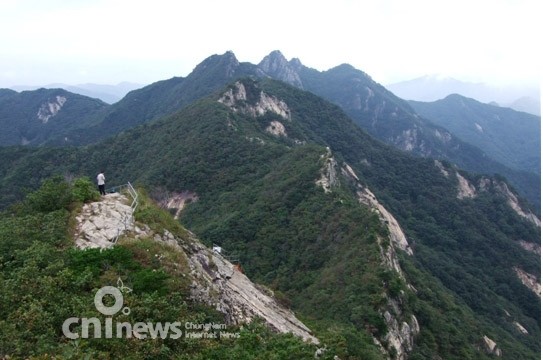 |
||




